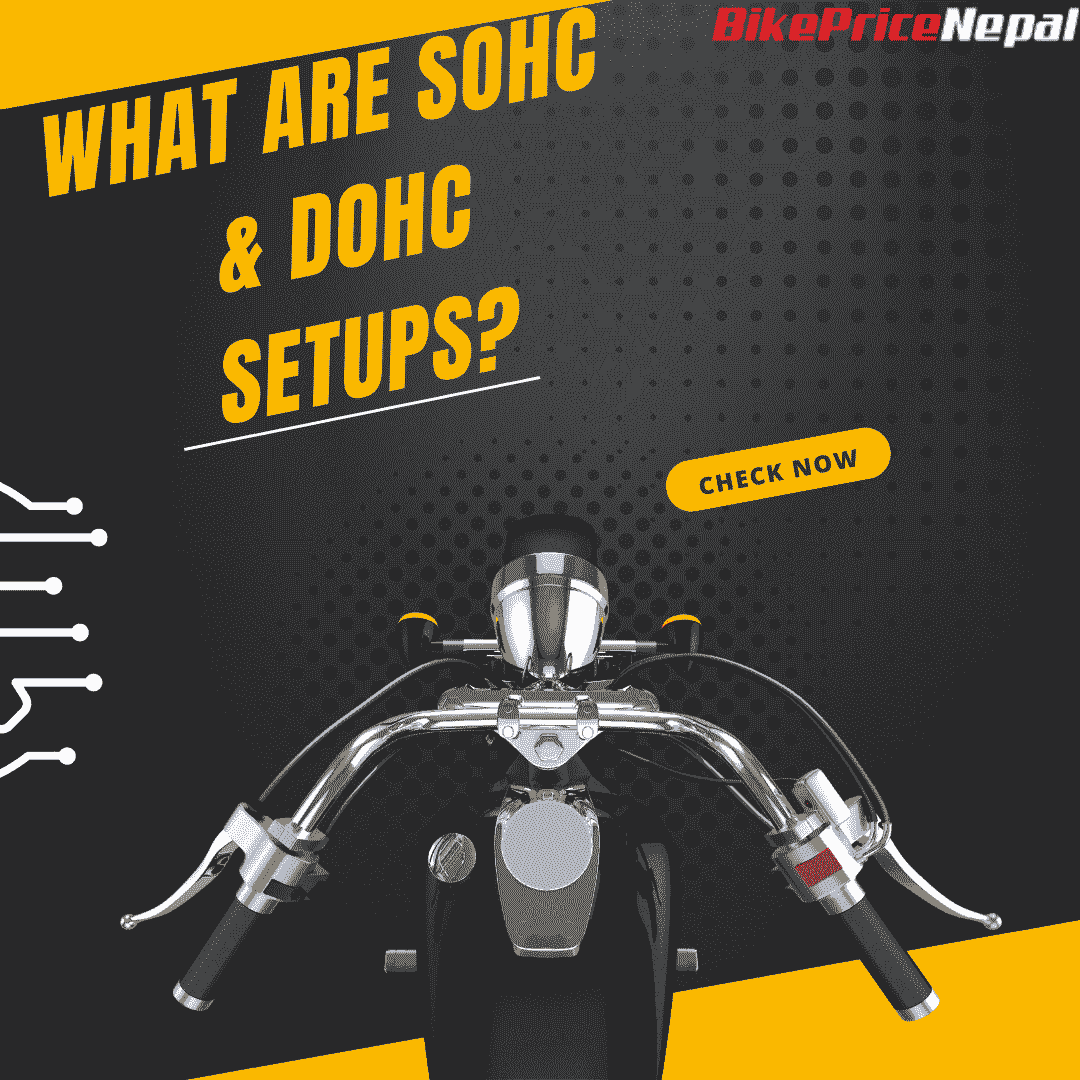What Are SOHC And DOHC Setups

What are SOHC & DOHC setups?
Most of us have seen the acronyms SOHC and DOHC whenever we’re browsing the internet and looking at the specs of certain motorbikes. The terms SOHC and DOHC engines are frequently used or pop up whenever we are going through the detailed specifications of any motorbike and scooter. But have we given a moment of thought to what it could mean and how important it is to be considered while choosing a motorbike? In this article, we will be talking about the differences between these engine setups and how important they are.
The internal combustion engine is one of the most important inventions of modern times, with many innovations made over the years to improve its efficiency and power output. One such innovation is the use of either Single Overhead Camshaft (SOHC) or Double Overhead Camshaft (DOHC) engine designs. In this article, we'll explore the differences between these two engine designs, as well as their advantages and disadvantages, to help you make an informed decision on which one is best suited for your needs.
SOHC Engine Design
The SOHC engine design utilizes only one camshaft to operate both the intake and exhaust valves, located in the cylinder head directly above the valves and driven by a timing belt or chain. As the camshaft rotates, it opens and closes the valves at the appropriate time, allowing air and fuel to enter the cylinder and exhaust gases to exit.
Advantages of SOHC Engine Design
The main advantage of the SOHC engine design is its simplicity, with only one camshaft, making it less complex and less expensive to produce. This also translates into fewer parts to maintain and replace over time, and it is more compact, making it an ideal option for tight engine compartments.
Disadvantages of SOHC Engine Design
However, one of the main disadvantages of the SOHC engine design is that it has limited performance potential, as it cannot operate the valves as efficiently as a DOHC engine, which can restrict its maximum power output. Moreover, the single camshaft can only control a limited number of valves, further reducing its performance potential.
DOHC Engine Design
The DOHC engine design, on the other hand, utilizes two camshafts to operate the intake and exhaust valves separately, located in the cylinder head and driven by a timing belt or chain. One camshaft operates the intake valves, while the other operates the exhaust valves. This allows for more precise control over the valves and can increase the engine's power output.
Advantages of DOHC Engine Design
The main advantage of the DOHC engine design is its ability to produce more power than a SOHC engine, as it can control the valves more precisely, allowing for greater airflow into and out of the cylinders. This can result in increased horsepower and torque output, making the engine more powerful overall. Additionally, the DOHC design can accommodate more valves per cylinder, which can further improve performance.
Disadvantages of DOHC Engine Design
However, the main disadvantage of the DOHC engine design is its complexity, as it is more complex and expensive to produce than a SOHC engine. The added components can also make the engine larger, which can be a disadvantage in tight engine compartments. Finally, the DOHC design requires more maintenance than a SOHC engine, as there are more components to maintain and replace over time.
Which one is best for your needs?
The choice between a SOHC and DOHC engine design ultimately comes down to your specific needs and priorities. If simplicity, cost, and compactness are your top priorities, then a SOHC engine may be the best choice for you. On the other hand, if performance is your top priority, then a DOHC engine may be the better option. It's important to carefully consider your needs and do your research before making a decision.
According to an article by Engine Builder Magazine, one of the key differences between SOHC and DOHC engine designs is their valvetrain configuration. The article notes that SOHC engines typically use a rocker arm system to operate the valves, while DOHC engines use either a bucket and shim system or a direct-acting system. The bucket and shim system uses a bucket that sits on top of the valve and a shim that sits on top of the bucket to adjust valve clearance, while the direct-acting system uses a lift.
